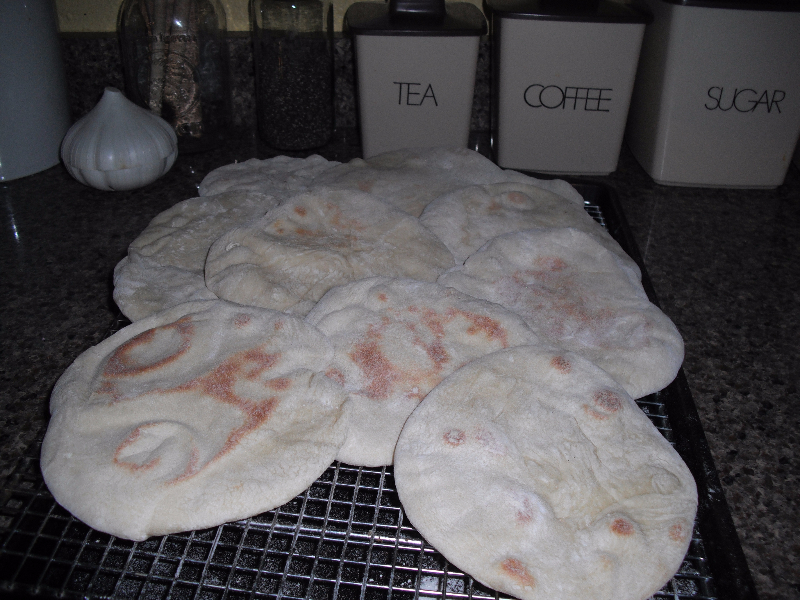|
Why bread at all? When early man began collecting seeds to eat and later farming grains a way to quickly prepare and eat the grains was needed. That was especially so for the hunter of the tribe who did not have the time to build a fire and cook the grain into a gruel. Bread was the answer; compact, durable and ready to eat. Almost all regions around the earth have a form of flat bread. Some is unleavened such as the tortilla of Central and South America. Bread has been part of human history for more than 4,000 years. Bread was prepared as early as 2500 BC in Mesopotamia, the fertile crescent, the land between the rivers and home of some of the earliest civilizations.
From the Middle East the soft, slightly leavened bread spread across the Western Hemisphere. Similar breads can be found as Arabic bread, Lebanese bread, Syrian bread, and naan to name a few. I’m sure we would have to include pizza pie in the list as well. On particular variety, pita bread is baked in a very hot oven and that causes the bread to puff up making a hollow space between the crusts. Pita bread was a popular fad food in the late 1950s and 60s because of that hollow space. Cut in two along a line of diameter, the bread made pockets for sandwich stuffing. It was a very popular for mothers to make sandwiches for their school-age children if not their husbands.
Although not as popular or widespread as it once was, pita bread is still with us and can be found wrapped taco-style around a gyro sandwich or cut half to make falafel pockets. Bakery produced pita bread is very good but master the art of pita bread making and discover just how great it really is.
|


